If you’re a Chevy or GM driver, you might be curious about the differences between the LS3 and LS7 engines. As a fourth-generation small block from GM, both these engines have much to offer, but they also have unique strengths and weaknesses.
In this article, we’ll dive deep into the intricacies of the LS3 vs LS7 engines. We’ll also explore key performance criteria to help you decide which machine is best suited for your needs. After reading this article, you should understand these impressive powerhouses more clearly. Whether you’re looking for a boost in acceleration or want to get more out of your vehicle, we’ve got you covered.
Search Terms: ls3 vs ls7 for boost, ls3 vs ls7 reddit, difference between ls3 and ls7 heads, Ls3 vs ls7 engines specs, Ls3 vs ls7 engines reliability, Ls3 vs ls7 engines reddit, Ls3 vs ls7 engines horsepower, Ls3 vs ls7 engines forum, Ls3 vs ls7 engines for boost, ls3 vs ls7 reliability
What’s The Difference Between The LS3 and LS7 Engines?
The LS3 and LS7 engines differ in performance, with the LS7 boasting more horsepower. While its enhanced reliability justifies the higher cost, both engines have been associated with distinct issues.
To help you make your decision, here is a detailed list of how these two beasts compare:

1)Years of Production
The LS3 and LS7 engines are the 4th generation of motors from GM; both were built in different years, but you can opt for either engine as remanufactured.
Notably, the LS7 is the older model produced from 2006 to 2015, while the LS3 was built between 2008 and 2017. With that in mind, including either of these motors as part of your vehicle’s components is a testament to GM’s craftsmanship providing you with reliable performance.
2) Displacement/Size
The LS3 and LS7 engines are powerhouses built to fit specific Chevrolet models. The LS3 boasts a 6162cc or 376.0 cubic inches displacement, while the LS7 has a staggering 7008 cc or 427.6 cubic inch displacement, designed for the Corvette Z06 and Camaro Z28.
But it’s not just about size! The LS3 has a cylinder bore size of 103.25 mm and a piston stroke size of 92 mm, while the LS7 has a bore size of 104.8 mm and a stroke size of 101.6 mm. While the larger stroke size can lead to drawbacks, such as increased friction and crankshaft stress, it has a longer lifespan overall.
3) Power/Torque Output
The LS3 and LS7 are high-performance engines, but how do they compare? The LS3 can deliver 426 to 436 horsepower at 5900 RPM, whereas the LS7 is rated at 505 horsepower at 6300 RPM – no wonder it’s the go-to for builders seeking a racing engine.
The LS7 offers more torque, with 470 lb-ft at 4800 RPM. In contrast, the LS3 delivers 420-428 lb-ft at 4600 RPM. Whether you go for the LS3 or LS7, you’ll get an engine that packs a punch.
3) Compression Ratio
The LS3 boasts a compression ratio of 10.7:1, with the LS7 rivaling it at 11.0:1.
While the latter may appeal to those desiring fuel efficiency, a high ratio generates more energy during combustion, culminating in a higher temperature with less fuel expenditure. Consider the benefits when selecting your optimal engine.
4) Material
The engines have cylinder heads and blocks created using cast aluminum, ensuring a lightweight design.
However, while this material allows for more excellent thermal conductivity and faster engine cooling, resulting in efficient operation, it sacrifices some durability compared to a cast iron engine.
To ensure optimal performance, it’s essential to consider these factors when choosing an engine block material.
5) Fuel System
The sequential fuel injection systems of LS3 and LS7 motors power top-notch injectors that fire individually, leaving them incredibly efficient.
Although premium-grade fuel with a minimum 91 octane rating is obligatory for LS7 engines, the LS3 engine provides the pliability to use any fuel option, including regular or mid-grade blends.
Upgrade your ride’s performance with these powerful engines and unmatched fuel injection systems.
6) Reliability
While the LS7 engine offers a slight advantage in terms of performance, it’s not entirely invulnerable to issues. Reports of cavitation in the oil system and exhaust valves getting separated from the stem are among the complaints. The good news is that upgrading the engine can help fix these problems relatively quickly.
The LS3 comes with a fair share of issues. The most common gripe among users is faulty rings, which can lead to more oil consumption. As the mileage begins to mount, the LS3 engine tends to wear out quicker, with valve and lifter issues cropping up sooner than with the LS7. Furthermore, its smaller, more compact size makes maintaining it more challenging, given that the replaceable parts and lifters are challenging to access.
In short, while both engines have advantages and disadvantages, upgrading the LS7 may be a wiser choice to ensure better performance and longevity.
7) Cost (Engine Price)
The world of GM engines boasts brilliant engineering, translating into exceptional performance.
To join the ranks of car enthusiasts who crave the intensity of horsepower, the LS3, with its 6.2-liter capacity, is a great place to start. Prices range around $6,500.
But for even more power, the LS7 packs a punch that may cost twice as much, and that’s before installation.
While these figures are estimates and costs differ depending on your vehicle’s make and the supplier you choose, there is little doubt that owning an irresistible engine is within reach.
8) LS3 Vs LS7 Specifications
When comparing the LS3 and LS7 engines, paying attention to their specifications is critical. Both are derivatives of the LS2, similar to an almost identical engine block. These aluminum builds boast steel and titanium parts, making them incredibly durable and light – two crucial features for any car part.
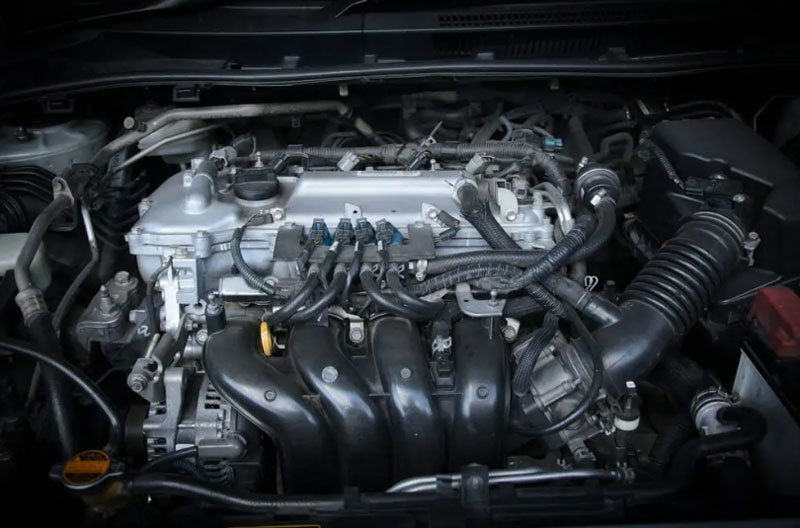
While they share design features with the LS2, both engines’ updates distinguish them. One significant difference is their respective displacements. The LS7 has a 7-liter displacement, while the LS3 has a 6.2-liter value. And both engines have larger bore sizes than the LS2.
The LS7 packs a punch with 505 horsepower – significantly more powerful than the 430 horsepower of the LS3. But fear not; you can still boost the LS3’s horsepower to impressive peaks with an LS3 supercharger fitted during engine mods.
In short, please pay attention to each engine’s unique specifications when choosing between them. The LS7’s more robust horsepower could be the difference between a good and excellent driving experience, but the LS3 is no slouch, especially when fitted with a supercharger.
| Specs | LS 7 Engine | LS 3 Engine |
| Part Number: | 19329246 | 19369326 |
| Camshaft Duration | 211° intake / 230° exhaust | 204° intake / 211° exhaust |
| Rocker Arms EX | Investment-cast, roller trunnion | Investment-cast, roller trunnion |
| Maximum Recommended rpm | 7000 | 6600 |
| Cylinder Heads | CNC ported LS7-style ports; 70-cc CNC combustion chambers | Aluminum L92-style port; “as cast” with 68-cc chambers |
| Engine Type: | LS-Series Small-Block V-8 | LS-Series Gen-IV Small-Block V-8 |
| Connecting Rods | Forged titanium | Powdered metal |
| Reluctor Wheel | 58X | 58X |
| Balanced | Internal | Internal |
| Recommended Fuel | Premium pump | Premium pump |
| Block | Cast aluminum with six-bolt steel main bearing caps | Cast aluminum with six-bolt, cross-bolted main caps |
| Rocker Arm Ratio: | 1.8:1 (offset, intake only) | 1.7:1 |
| Camshaft | Hydraulic roller | Hydraulic roller |
| Pistons | Hypereutectic aluminum | Hypereutectic aluminum |
| Rocker Arms In | Investment-cast, roller trunnion | Investment-cast, roller trunnion |
| Displacement | 427 (7.0L) | 376 (6.2L) |
| Valve Size | 2.200 titanium intake / 1.610 sodium-filled exhaust | 2.165 intake / 1.590 exhaust |
| Compression Ratio: | 11.0:1 | 10.7:1 |
| Valve Lift | 593 intake / .588 exhaust | 551 intake / .522 exhaust |
| Crankshaft | Forged steel | Nodular iron |
| Bore x Stroke | 4.125 x 4.000 (104.8 x 101.6mm) | 4.065 x 3.622 (103.25 x 92 mm) |
Similarities Between LS3 and LS7 Engines
The LS3 and LS7 are two high-performance V8 engines explicitly designed for use in Corvettes. Equipped with similar displacement, these machines pack a punch in any race. Both engines produce an impressive 435 horsepower at 6000 RPM and 400 lb-ft of torque at 4600 RPM.
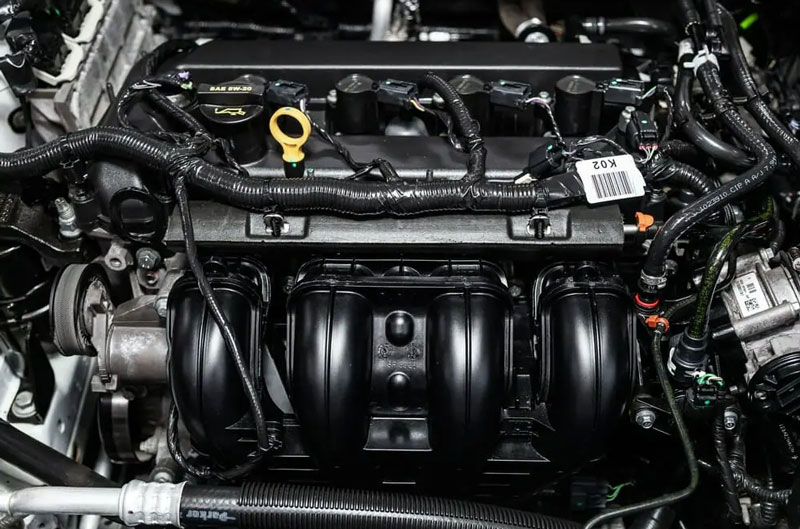
1)Block Material
Both the LS3 and LS7 blocks are crafted from aluminum, one of the lightest materials in car engines. Plus, it’s more wallet-friendly compared to iron and steel.
We suggest opting for an aluminum block if you’re building an engine. Its lighter weight, ease of handling, and affordability make it a winning choice.
2)Engine Type
The LS7 engines share many similarities with their LS3 counterparts but with a few noteworthy differences that give them the edge. Changes to the piston design, adding a water pump, and other minor updates all contribute to the LS7’s superior performance.
3)Weight
Although LS3 and LS7 have similar weights, they’re not exactly identical twins. Made of lightweight aluminum, both engines offer impressive power-to-weight ratios.
However, their connecting rods and a few other parts differ in materials: steel or aluminum. Ultimately, the variations make each motor better suited for different applications.
4)Lifters
Cylindrical lifters are vital in an engine’s valve mechanism, working as a pressure applicator and a “floating” pivot point. Though LS3 and LS7 engines share lifter components, interchanging them is not recommended during engine swaps. Keeping the lifters in top working order is crucial to help the engine run smoothly and reliably.
What are the Common Problems of the LS7 and LS3 Engines?
1)Burning Oil
Both engine oil pumps may sometimes fail to generate enough pressure to lift oil into the rocker arm assembly, leading to oil overflow. It is usually caused by a defective filter or pump that can be resolved by replacing either component. However, if this issue persists after replacing both, it may be a sign for a new engine. Regular maintenance is crucial for optimal performance to ensure the engine runs smoothly.
2)Knocking Noise
Improper sealing between pistons and cylinder walls is a common issue, which can cause reduced engine performance.
One reason for this is the development of grooves in piston rings, which may originate from poor manufacturing or if they get stuck to the cylinder wall while compressing.
Additionally, inadequate valve seals and gaskets can also lead to groove formations.
3)Oil Pressure Issues
These engines experience oil pressure problems, resulting from camshafts wearing down, and can affect the car’s performance.
There is a remedy. By substituting worn components with LS1 or LS6 camshafts or with a complete aftermarket repair kit, your car’s engine can run smoothly again.
LS7 vs LS3 Heads
| LS7 Heads | LS3 Heads |
| Delivers 505 horsepower | Delivers 495 horsepower |
| 470 Ib-ft of torque | 473 Ib-ft of torque |
| Costs around $300 – $400 | Costs around $1,200 |
What is A LS3 Engine? (LS3 Engine)
The LS3 motor is a 4th generation small-block GM engine. Initially introduced in the Corvette in 2008, it has become a powertrain favorite in the Chevy supercar lineup. And it’s no secret why.
This 6.2-liter beauty has a sequential fuel injection system and boasts 430 horsepower and 424 lb-ft of torque. Those specs are great on their own, but their tunability sets this small but mighty motor apart.
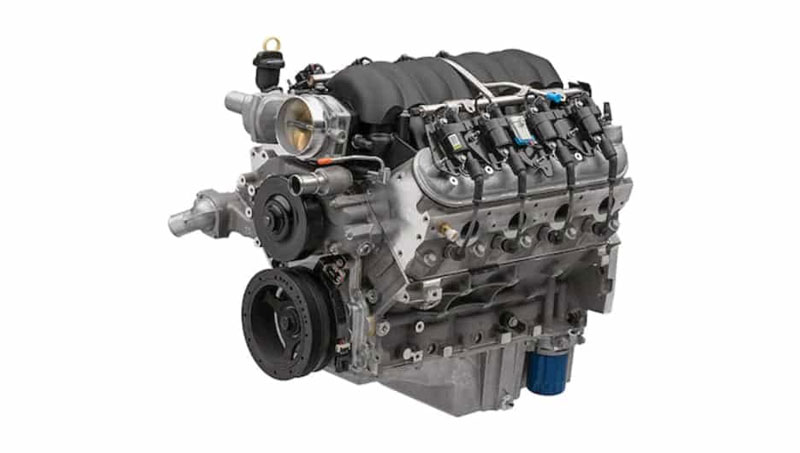
In its base form, the LS3 is a beast. But it’s easy to modify as well. Some have taken their LS3 engines even further, up to 436 horsepower.
Regardless of what kind of powertrain setup you’re running, the LS3 has high-flow cylinder heads and a matching intake manifold that ensures proper airflow.
The 58X ignition unit maintains accurate ignition timing to keep things running smoothly. Did we mention that it has a crankshaft ring and sensor to give you an accurate reading of your crankshaft’s position?
It’s no wonder why the LS3 has become a mainstay in GM’s high-performance lineup of vehicles like the Camaro, Pontiac G8, and Corvette. This 6.2-liter engine packs a punch with its great horsepower and torque.
And with the help of its high-flow cylinder heads, intake manifold, and tight ignition timing, it continues to perform and turn heads on the road.
-LS3 Engine Pros
The LS3 is the epitome of LS engines for its power, durability, and versatile structure. With an impressive output of 430 horsepower, it has become a favorite of muscle and power car enthusiasts even before any boosting. Its aluminum build adds to its strength without hindering its speed, and the other steel parts make it a reliable component of any General Motors vehicle.
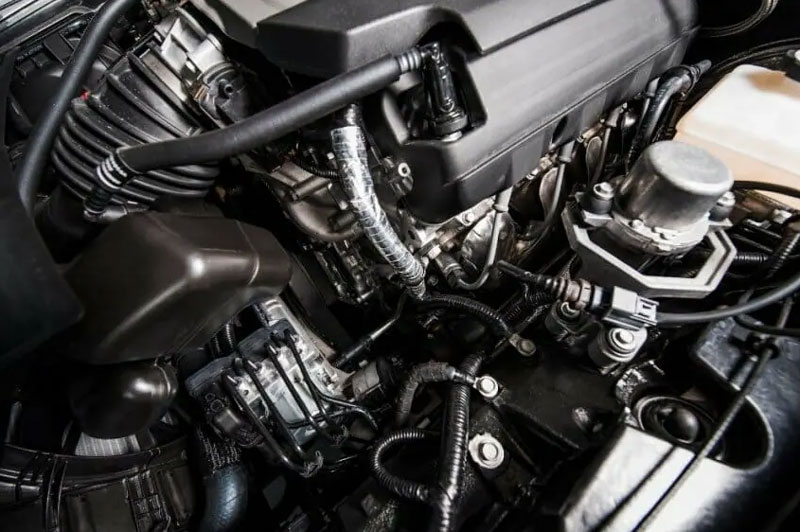
But that’s not all – the broader bore of the LS3 allows it to have a displacement of 6.2 liters, resulting in faster response time and a rapid revving rate. And despite its superior performance, the LS3’s small size offers endless possibilities, easily fitting into most vehicles. Consider the LS3 for your next engine upgrade.
-Cons
The LS engine types are renowned for their exceptional performance but are not without challenges. One common issue is piston ring faults, which, if left unattended, can result in severe damage, such as high oil consumption or engine blow-by.
This problem is more likely to arise if you modify the engine. Moreover, maintaining compact LS3 engines can be quite a challenge. For instance, you must remove the entire machine to replace the lifters!
What is A LS7 Engine? (The LS7 Engine)
The LS7 engine is a legendary masterpiece. First released in 2006, before the LS3, this engine is a perfect balance of aluminum and cast steel. Its light block provides superior durability. The engine generates a stunning 505 horsepower and 474 lb-ft of torque – powerful yet graceful.
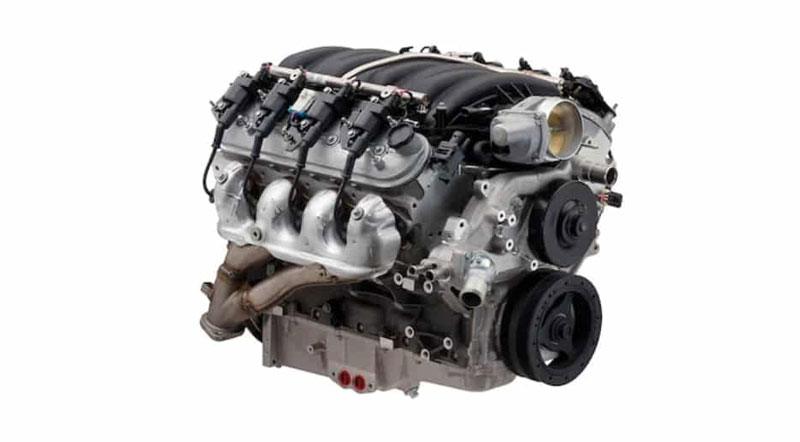
It features race-derived cylinder heads that deliver maximum airflow, allowing for fewer airflow restrictions and delivering naturally aspirated yet fantastic power. Additionally, the engine boasts a high-flow intake manifold that perfectly synergizes with the motor’s cylinder heads.
Furthermore, the intake manifold has acoustic foam and a shell to halt unwanted noise. The dry-sump system is also present, allowing for ideal oil consumption and supplying perfect lubrication even during high RPM situations.
The LS7 engine is an amalgam of elegance and power, leaving no one indifferent.
-LS7 Engine Pros
One of the standout features of the LS7 engine is its remarkable 505 horsepower, making it a prime choice for sports vehicles. And with its lightweight aluminum construction, this engine is built to last, giving you confidence that you won’t have to worry about frequent replacements.
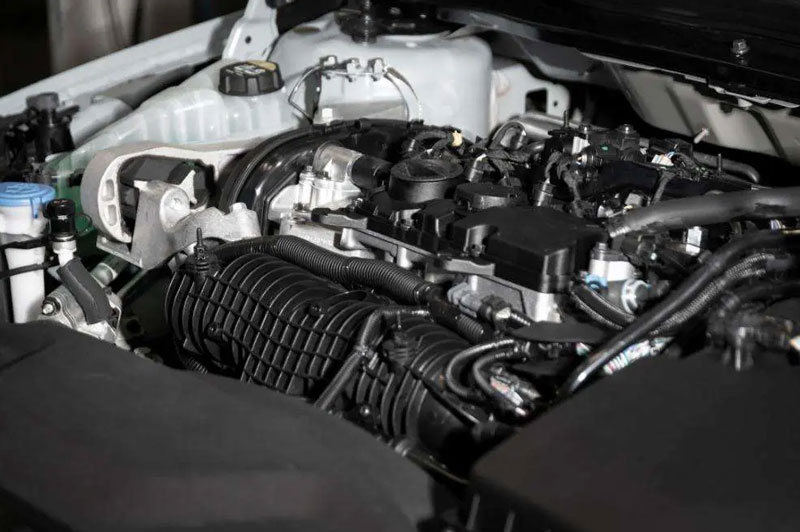
Another thing to note is the ease of maintenance thanks to readily available parts, ensuring stress-free repairs.
But what sets the LS7 apart is its 58X ignition system, which ensures accurate ignition timing for optimal performance and fuel economy.
The LS7 is a top choice for high performance and durability.
-Cons
Most LS engines have a common issue with their oil system encountering cavitation problems, impeding oil supply.
You can replace the troublesome oil system with a preferred one, regardless of whether you’re swapping an LS3 engine (which can get expensive) or looking into the LS7.
On the bright side, many aftermarket parts are available for both the LS3 and LS7, making acquiring the necessary components more straightforward and cost-effective.
Final Words: LS3 vs LS7 Engines
The LS3 and LS7 engines are the most popular in the GM stable, with their impressive power outputs, lightweight construction, and fuel-injected systems. Although they share similarities like an aluminum build and steel/titanium parts, several differences must be considered.
The LS7 has a more significant displacement of 7 liters, a higher horsepower output of 505 at 6300 RPM, and a higher compression ratio of 11:0:1. The LS3 has a smaller displacement of 6.2 liters, more torque with 420-428 lb-ft at 4600 RPM and a lower compression ratio of 10.7:1.
When comparing the two, it’s essential to consider their specifications and costs, in addition to their fuel system and material. The LS7 is known for its robust power output but can be susceptible to issues such as cavitation in the oil system; meanwhile, the LS3 can see its rings wear out with time.

I’m Timothy Ballard, owner of a used car dealership in Springfield. I love just about everything automotive, but I have a special place in my heart for trucks. I’m an ASE Certified Master Technician, so I know my way around a car. In my spare time, I enjoy traveling with my family and hiking new trails.
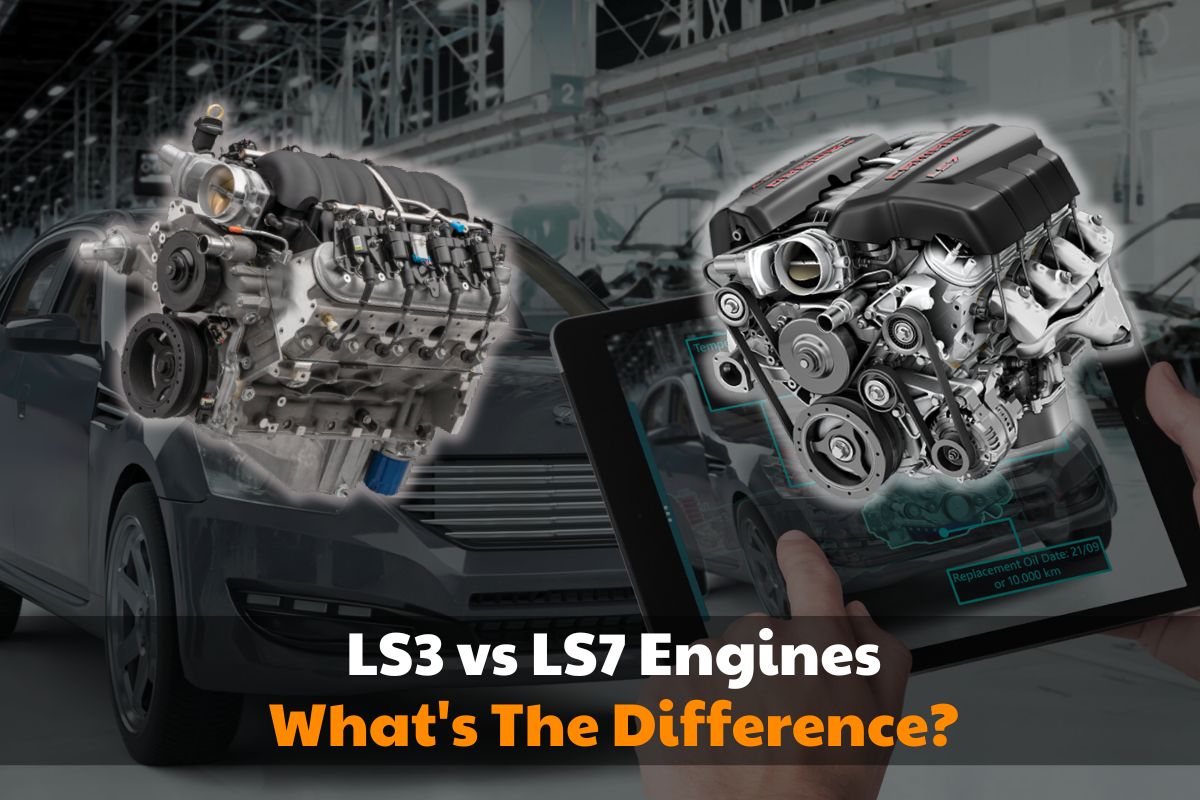
Both the LS3 and LS7 are impressive engines offering high performance and reliability. The LS7, with its 505 horsepower output, is especially desirable for those seeking maximum power. However, it’s important to note that the LS7 has known issues with valve guides and sodium-filled exhaust valves of poor quality.
In comparing the LS3 and LS7 engines, several key differences emerge. Firstly, the LS7 boasts a larger bore size of 4.125, which allows for the potential to achieve a 427 displacement with a 4″ stroke. Additionally, the LS7 delivers its 505 horsepower at 6300 RPM, while the LS3 ranges between 426 and 436 horsepower at 5900 RPM.
Despite these distinctions, both the LS3 and LS7 are renowned for their exceptional performance. Whether you prioritize power or reliability, either engine is a solid choice depending on your specific needs and preferences.
Are there any default differences between the ls3 and ls7 blocks? I am aware that the ls7 liners are longer and that there is an additional head bolt. However, I am uncertain about any other variances in the block itself. Furthermore, if I wanted to, could I utilize ls3 components within an ls7 block? Your insights into these matters would be greatly appreciated.